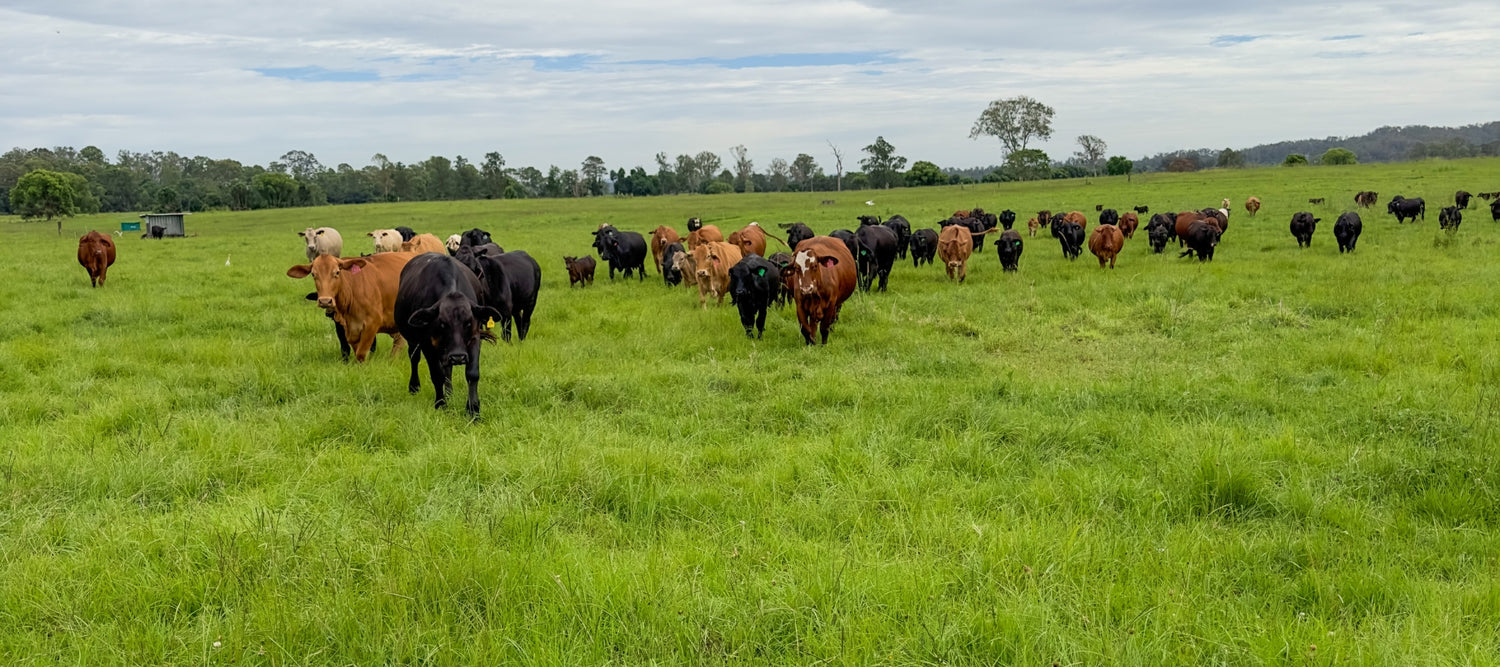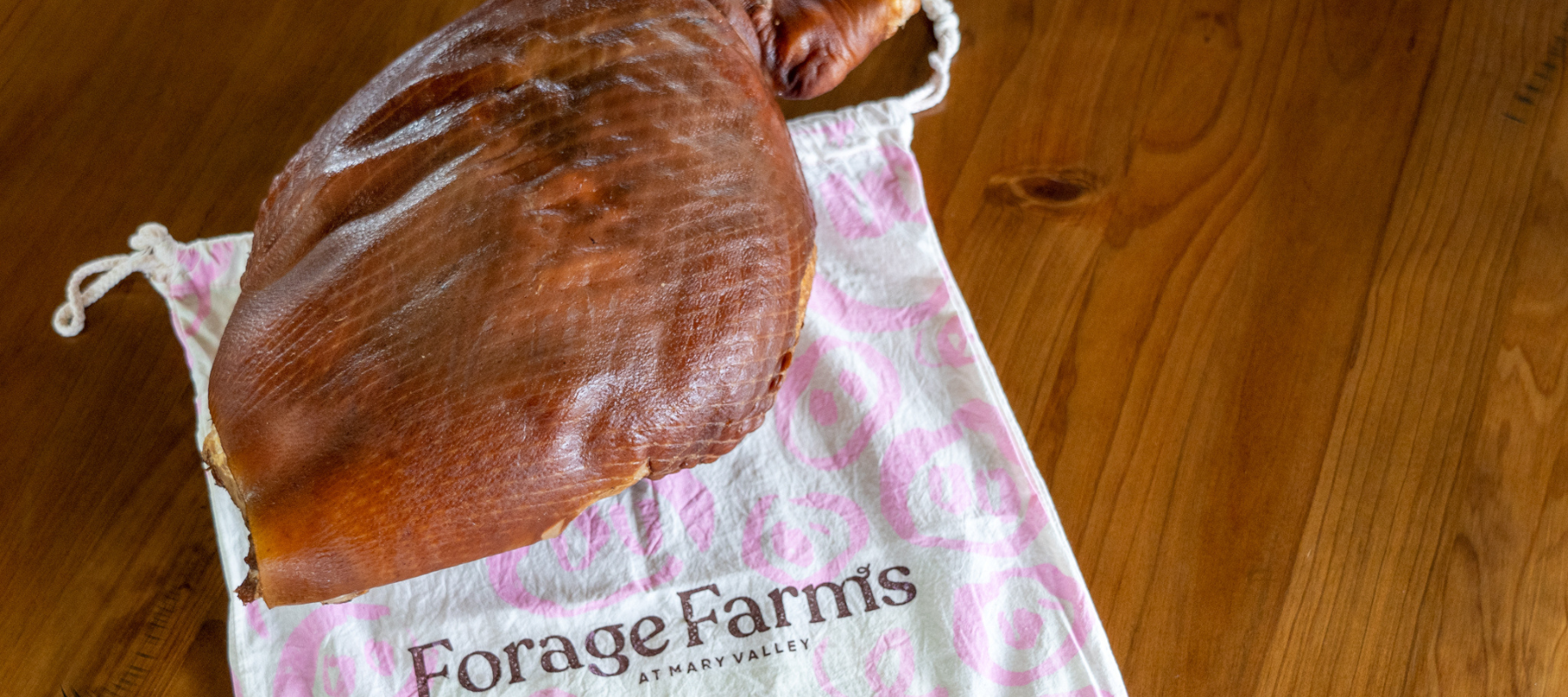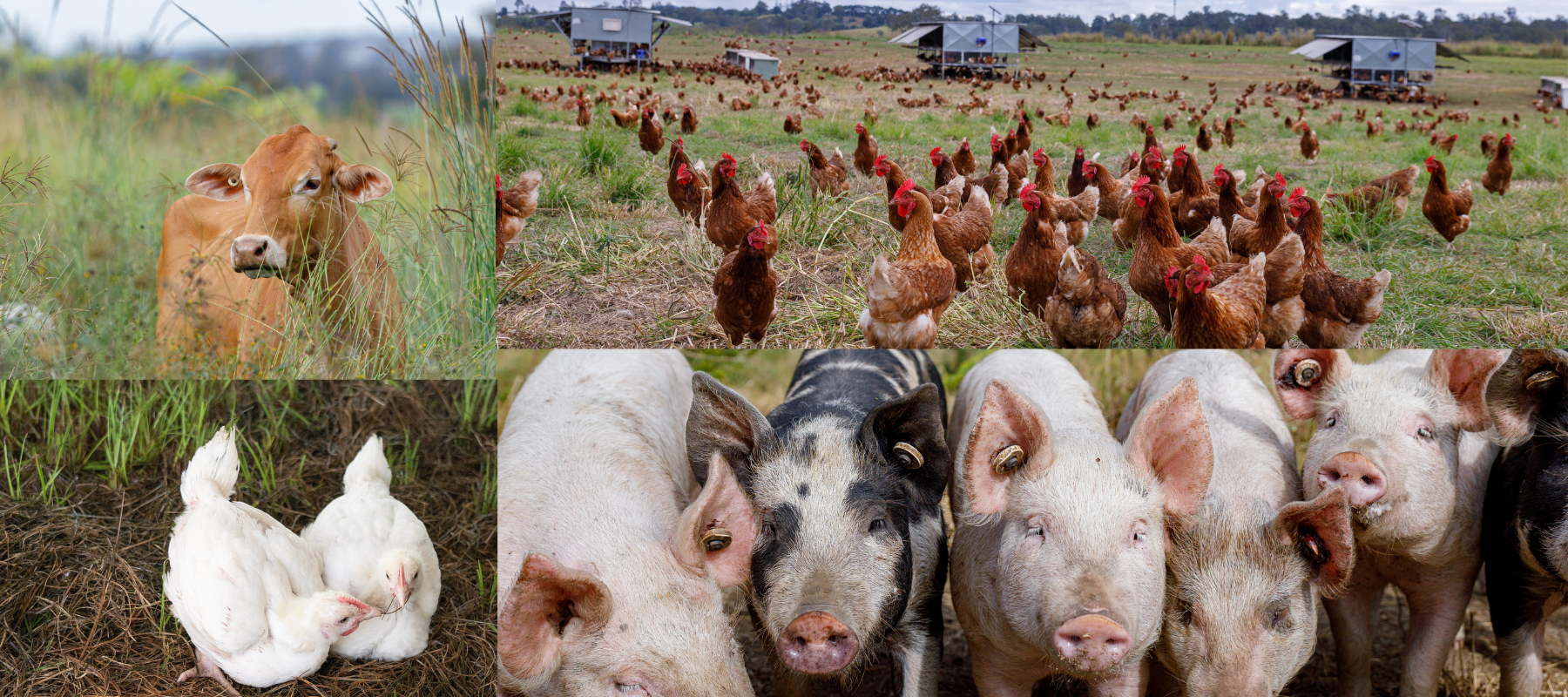Forage Farms: Spring Update
Life on the farm is always busy. It’s no secret that this year has been WET! Our average rainfall is 1200mls, and this year we have had over 2100mls so far. When mother nature dishes up, we farmers must observe and adjust so that our animals can continue to thrive.
Chickens
The latest addition to Forage Farms is a new flock of chickens. The damp conditions have meant that we have had to have the chickens on faster rotations as some areas are wetter than others. Collecting eggs in slush is not ideal so we try to avoid that. Our hens have been very productive with a high laying rate, and they are enjoying the sun now that things have dried out a little.
Our very popular meat chickens are growing well. One batch is out pecking in the paddock, with another one still in the brooder until they are feathered enough to be out. Keeping up with demand is a challenge, and we have another flock coming soon.
Pigs
The pigs are enjoying the sun, but they haven’t been complaining about the mud either! They are very happy with so much green grass and other goodies to graze on.


Cattle
Our cattle have shiny, slick coats thanks to the spring pasture. It’s been a great year for Mums and babies, and it will soon be time to move them into the yards for tagging and marking before the calves get too big.

Last year we boosted our cattle numbers as we had a large amount of organic matter that needed to be eaten to allow for new plants that were coming through. They have done their job in reducing the bulk on top, and we now have lots of diversity with new highly nutritious plants at the early growth stage, which are more suited to cattle. The challenge now is that everything is growing so well! This means we may not have enough cattle to keep up. As farmers, our most important job is to be observant and make changes where necessary. It is always a bit of a balancing act. If we purchase more cattle, there is always a risk that if it floods, they won’t be able to access the food in the lower paddocks.
We also have a lot of cover crops that’s starting to emerge. Annuals, perennials, pasture herbs and legumes are starting to germinate thanks to seeds purchased from local suppliers Kandanga Farm Store and Tom Grady’s Rural in Gympie. Most of these are doing well except for one area that got drenched a week after planting!

Infrastructure
We are building some new sheds for the machinery so that it can be kept under cover, and the pack shed has been extended for the farm vehicles to live under.

Natural Sequence Farming Education
Demand for our Natural Sequence Farming courses continues to grow. Stuart and Megan deliver training courses through our sister company, Tarwyn Park Training, and recently took a road trip through NSW and Victoria.

What about Summer?
With another wet summer predicted, it won’t take much for it to flood. With the ground already pretty soaked, we must be prepared to manage what comes. The contours in the chicken area have turned into wetlands. This is not a bad thing – it has brought new vegetation with lots of wetland-type plants growing.
Life on the farm is never dull! If you want to learn more about where your food comes from and see Forage Farms in action, sign up for our next farm tour.




